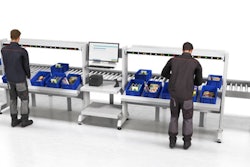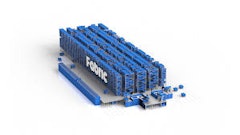
The global warehouse automation market was valued at $36 billion in 2021 and forecast to grow to $77 billion by 2027. However, in the mid- to long-term, expect a return to healthy growth with an estimated CAGR of 13% between 2021-2027, according to research from Interact Analysis.
“Mobile robots have become the most significant trend in the automation market in recent years. By 2027, they will account for 30% of total warehouse automation revenues, equating to around $14 billion,” says Rueben Scriven, research manager at Interact Analysis. “Although mobile robots are thought to be displacing fixed automation alternatives, this isn’t necessarily the case. They are often opening up new market opportunities, which would otherwise have remained manual. This type of technology is best suited to situations that require flexibility and scalability, whereas fixed automation is more appropriate in scenarios where increased throughput is the main goal.”
From Interact Analysis:
- There are four major factors impacting the market in the short term – the Ukraine-Russia war, lower investment by Amazon, changes to commodity prices and rising inflation rates.
- The war in Ukraine is having a negative impact on the whole of Europe, but in particular durable manufacturing in Eastern Europe. Investments in warehouse automation from manufacturing facilities in Eastern Europe have seen an uptick in recent years, especially with the trend toward nearshoring. However, many companies have reportedly postponed their investments as a result of the ongoing conflict.
- The conflict has also indirectly influenced rising interest rates and inflation. As consumer spending slows, retailers will likely tighten their purse strings and potentially postpone large scale automation projects until a more stable economic environment has been reached.
- Earlier this year, Amazon announced a slowdown in its fulfillment center expansion, which is having a direct impact on the company’s warehouse automation spending activity. In 2022, it is estimated that its spending on such projects will reduce by 30%, followed by a fall of 20% in 2023.

















